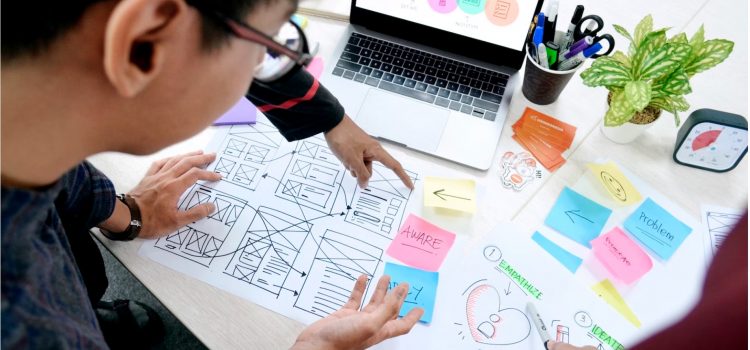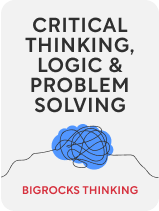

This article is an excerpt from the Shortform book guide to "Critical Thinking, Logic & Problem Solving" by Bigrocks Thinking. Shortform has the world's best summaries and analyses of books you should be reading.
Like this article? Sign up for a free trial here.
How can you figure out whether certain information is relevant to the issue at hand? How do you know if an information source is credible?
The first step to critical thinking is gathering information. To do this well, first, clarify your topic or question and its parameters. Then, assess the relevance of the information you find. Check it for reliability, bias, and fallacies.
Continue reading to learn how to gather information to find real answers and solutions.
How to Gather Information
The authors of Critical Thinking, Logic & Problem Solving offer recommendations on how to gather information. They explain that, first, you should identify the topic or question you’re dealing with as well as the circumstances or context surrounding it.
Once you understand the parameters of your inquiry, you can begin researching it. To do this you’ll need to gather data, perspectives on the issue, and any additional information that could help you in your thinking process. For example, if you’re trying to understand why morale is down at your workplace, you’d need to find information that demonstrates that morale is down—such as productivity measures—and information about what could be causing it, which you can obtain by asking employees about their feelings and observations.
(Shortform note: Researching and gathering information on your topic may look different depending on the context of your study. If you’re working on an academic paper or project, online research tools like Google Scholar or Science.gov can provide sources like academic journals or scientific studies. If you’re working on something more personal or professional, such as analyzing a problem in your relationship or assessing team dynamics at work, you’ll instead need to talk to your partner or your colleagues and employees to get their perspectives and ideas on the topic.)
As you’re gathering information, assess its usefulness and credibility. According to the authors, not all information is equally useful, and you should also be aware of what information pertains to your inquiry and what information can be ignored to save you time and effort. For every piece of information you gather, ask yourself if it’s relevant to the subject of your thinking. Returning to our morale example, if you discover in your interviews that many of your employees enjoy playing video games at home, even though this shows a common interest among your employees, it likely doesn’t have an impact on morale, and you don’t need to take it into account.
(Shortform note: Gathering written research that’s not relevant to your topic can result in a lot of wasted time. To make sure you’re getting relevant information, scan the sources’ summaries or tables of contents before reading them deeply, or if you’re using an article or study, read the abstract before reading the entire article. Additionally, don’t just go with the first source that comes up when you search your topic since search algorithms are based on word similarity, not topic similarity.)
Finally, make sure you’re getting your information from reliable sources. The information you’re getting should come from an accurate source that has some authority on the subject. Asking your boss why your employees’ morale is down isn’t going to help you as much as asking the employees themselves since they’re the ones with firsthand experience with the problem.
Checking Sources for Reliability
To ensure you’re using reliable sources, the authors recommend the following:
Learn to identify real news versus fake news. Discuss different media sources with others and help each other distinguish between accurate news and things like sponsored articles.
Analyze your sources to ensure their authors aren’t making assumptions but rather are using reliable data to back up their claims. For example, if a source makes a claim like “Studies show that people pay more attention to ads that use large fonts,” look at the studies they’re citing and make sure the data in those studies actually support the claim they’re making.
Assess the authority of your source. Is this source an expert on the subject? Is it from a reputable media outlet? Does it explain where it got its information?
Checking Sources for Bias
The authors also recommend that you assess your source for any potential biases. Biases are errors in thought processing that result from generalizations the brain makes. These generalizations can help you make decisions more quickly, but they can also negatively impact your critical thinking. Biases are often impossible to avoid, but being aware of the biases in your sources can help you avoid them in your own thinking.
The authors list several different types of biases, including:
Anchoring bias, which means being more likely to believe information that you hear first over information you gather later.
Confirmation bias, which is the tendency to give more credence to information that confirms what you already believe and dismiss information that isn’t in line with your beliefs.
The halo effect, which is when you have a positive view of someone or something, and this leads you to view their opinions or claims more positively.
The Dunning-Kruger effect, which is when you put too much faith in your own abilities.
Checking for Logical Fallacies
The authors advise that you assess your information for fallacious logic and be on the lookout for fallacies in your own logic as well. A fallacy is a misunderstanding that interferes with your reasoning.
Some common fallacies include:
The middle ground fallacy. This is when there are two opposite options and you assume that the compromise between the two must be correct. However, if either of the opposite options is incorrect, then the middle ground will also be incorrect.
False cause, or confusing correlation with causation. Two things that co-occur may not mean that either one caused the other. It’s possible that both factors are caused by a third variable.
Anecdotal evidence fallacy. This fallacy involves using anecdotes, or isolated examples from real life, as evidence for a larger argument when more general evidence may not support that argument.

———End of Preview———
Like what you just read? Read the rest of the world's best book summary and analysis of Bigrocks Thinking's "Critical Thinking, Logic & Problem Solving" at Shortform.
Here's what you'll find in our full Critical Thinking, Logic & Problem Solving summary:
- A step-by-step guide for improving critical thinking and problem-solving skills
- Tips for conducting better research and finding reliable resources
- How to improve your communication and storytelling skills






